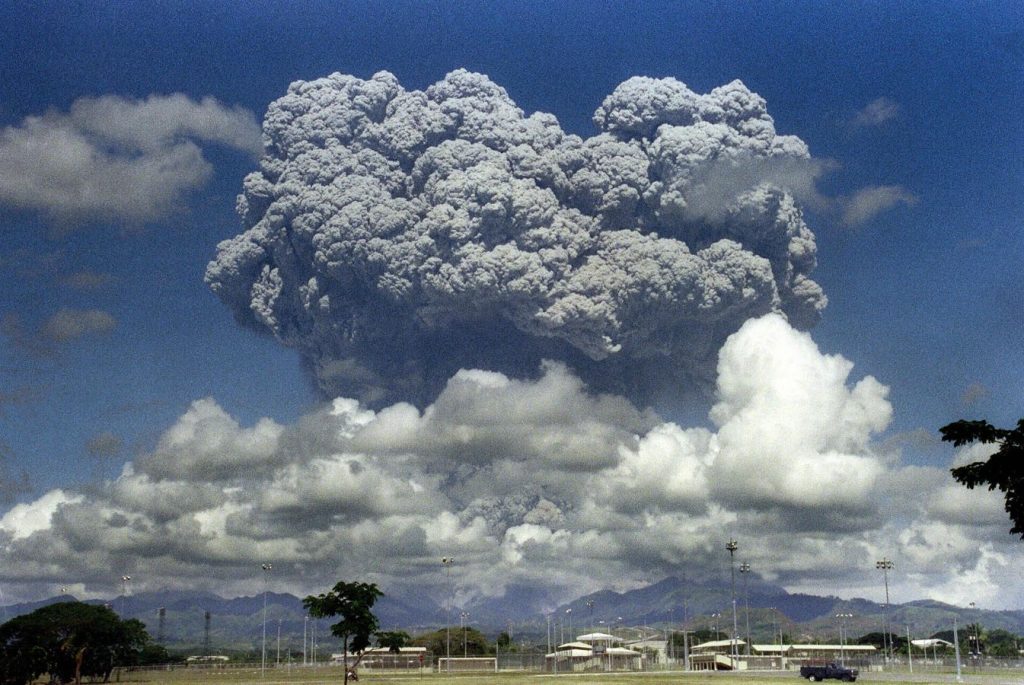A new study finds that massive volcanic eruptions happening at high latitudes caused dramatic, but short-lived climate cooling periods over the past 2,000 years.
Ash and gases injected by a volcanic eruption high into the atmosphere can act as a sunscreen, reflecting incoming sunlight and cooling the planet.
Based on tree-ring records and historical descriptions, unusually cold periods, such as around the year 540 (with 536 being “the worst year to be alive”), from 1275 to 1300, from 1430 to 1455 and around 1600 (a time known by historians as “Little Ice Age”) were linked to large volcanic eruptions. But the magnitude and location of the specific eruptions remained unclear.
To address this problem, an international team of geoscientists from the U.K., the U.S. and Switzerland led by Dr. Andrea Burke from the University of St Andrews, studied sulfur isotopes in ice cores from Greenland and Antarctica. Sulfur emitted during a volcanic eruption not only plays an important role in cooling the planet, forming sulfuric-acid droplets and other aerosols in Earth’s atmosphere and dimming the sunlight, but the sulfur isotopes can be compared to the chemical make-up of lava rocks coming from specific volcanoes.
Many scientists believed that to have widespread effects on the climate, a volcanic eruption needs to happen near the equator where wind patterns and atmospheric currents distribute ash and gases around the globe. The 1815 eruption of Mount Tambora in Indonesia was followed by a “year without a summer” in Europe and the U.S. The 1883 eruption of Krakatoa in Indonesia and the 1980-83 eruption of El Chichón—the worst in Mexico’s history—was followed by unusual weather patterns in the tropics. When Mount Pinatubo in the Philippines erupted in June 1991, the effects were felt worldwide. The second largest eruption of the 20th century caused global temperatures to drop by as much as 0.5 degrees.
But the new study shows that the largest historical cooling periods were due to volcanic eruptions at high latitudes. The results also show that the amount of sulfate injected into the high layers of the atmosphere (30 kilometers or higher) by these eruption events may have been around half that previously estimated, suggesting that summer temperatures may be highly sensitive to high latitude volcanic eruptions.
At high latitudes the atmospheric circulation is more complex, as cold air from the poles mixes with the warm air from the tropics. The effects of a volcano erupting in this area seems to be more profound than previously believed. According to the authors, climate feedbacks, such as sea ice extent and ocean heat content, may amplify the volcanic effects on the climate.
“Our data show that when Earth’s climate gets altered, other parts of the climate system can kick in to strongly amplify this initial change,” said Dr. Burke. “High latitudes feel these amplified climate changes particularly strongly.”
The study “High sensitivity of summer temperatures to stratospheric sulfur loading from volcanoes in the Northern Hemisphere” was published in the Proceedings of the National Academy of Sciences (2023). Additional material and interviews provided by University of St Andrews.
Read the full article here










